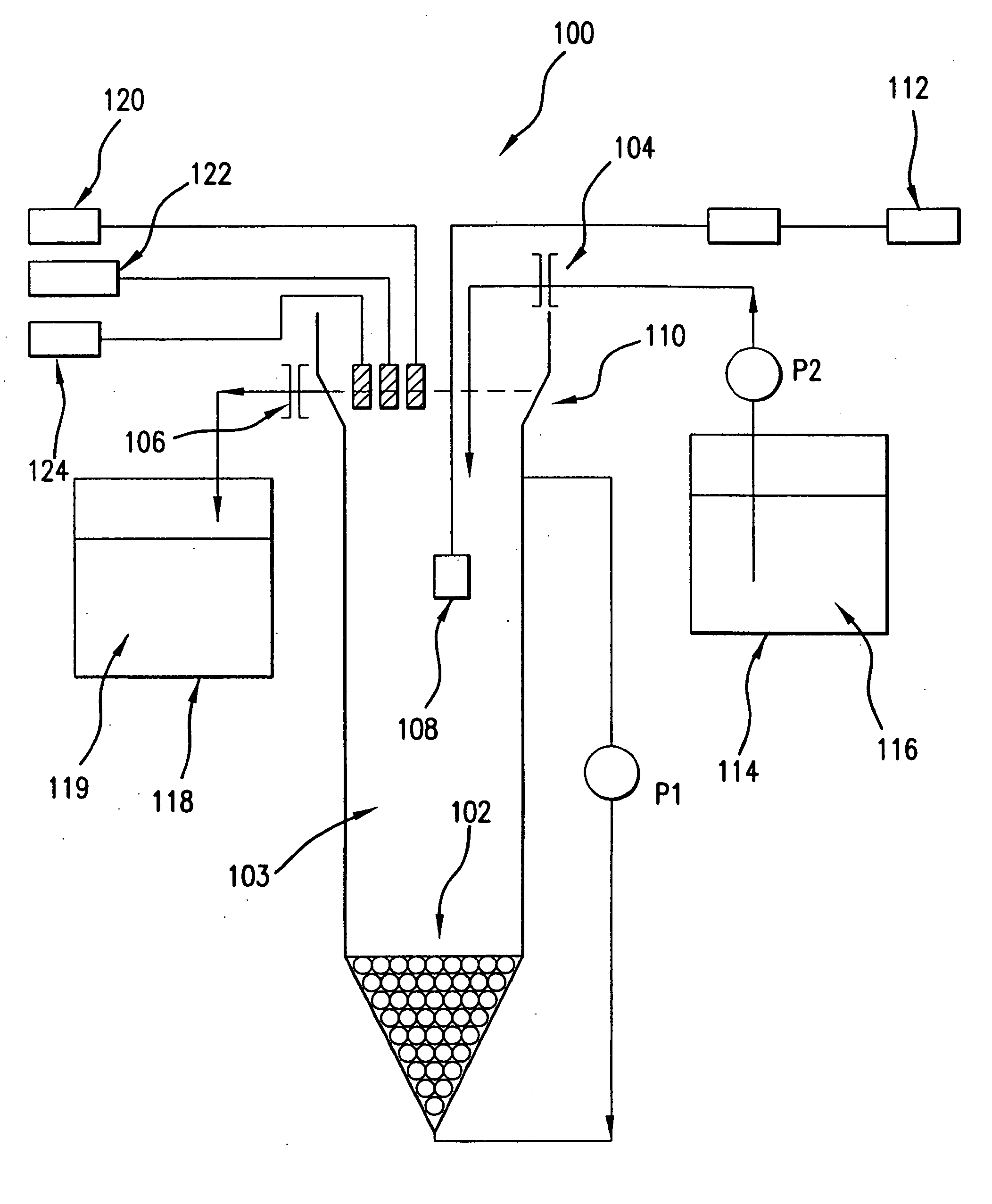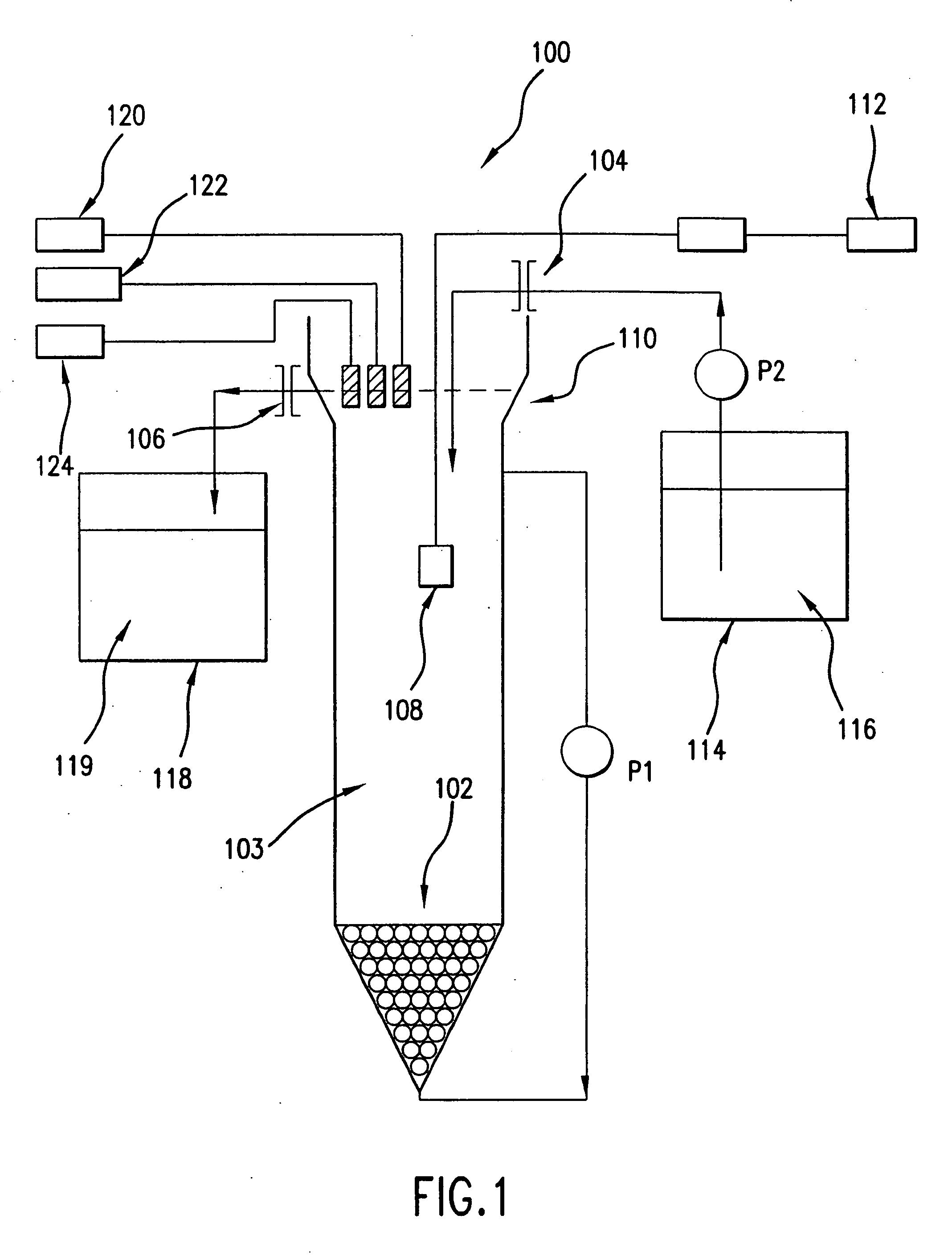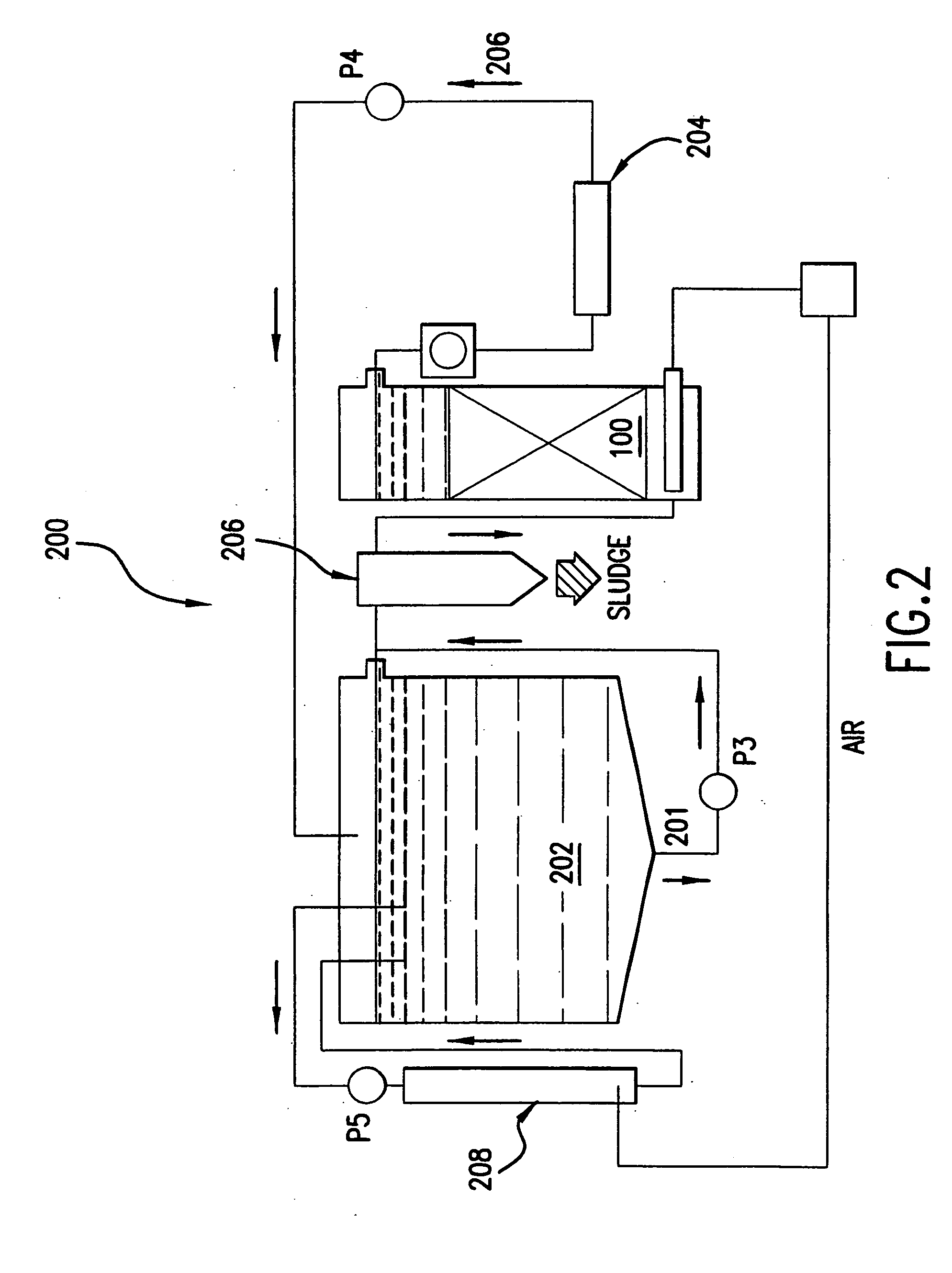Methods and apparatus for biological treatment of aqueous waste
a technology of biological treatment and aqueous waste, applied in biological water/sewage treatment, filtration separation, separation processes, etc., can solve the problems of increased risk to human health, abnormal hemoglobin (methemoglobin), and inability to transport oxygen
- Summary
- Abstract
- Description
- Claims
- Application Information
AI Technical Summary
Benefits of technology
Problems solved by technology
Method used
Image
Examples
example 1
Experimental Material and Analytical Equipment
[0055] Experimental materials and analytical equipment were used to create an example of a biofilter system according to the present invention.
[0056] Air Diffuser: Made of wood and purchased from a regular aquarium store.
[0057] Air Pump: The model of Silenger by Penn-Plax (Garden City, N.Y.).
[0058] ChronTrol XT: The ChronTrol XT (ChronTrol Corporation, San Diego, Calif.) is a programmable, microprocessor-based timing device. It can easily be programmed to switch circuits on and off at specific times and dates, for durations, on a cycle, or from external devices attached to its optional input connector. In this example, the ChronTrol XT is used to adjust the aeration modes and feeding rates.
[0059] Constant Temperature Cabinet (Stabil-Therm) and Muffle Furnace (M15a-2A): Both models are made by Blue M (Blue Island, Ill.). Measurement of mix liquid volatile suspended solids (MLVSS) and attached volatile suspended solids (AVSS) will fol...
example 2
Method of Comparing the Purification of Aqueous Waste Under Constant High-Oxygen Conditions and Under Alternating High-Oxygen and Anoxic Conditions
[0069] Two biofilter systems similar to those shown in FIG. 1 and utilizing the experimental materials and analytical equipment of Example 1 were set up. One was tested under continuous aeration, and the other under alternating aeration. Feed solution consisting of approximately 50 mg / l C6H12O6—C, 15 mg / l (HN4)2 HPO4—N and mineral nutrients was placed in a refrigerator. The feed solution was pumped into the reactor at a rate of approximately 4 ml / min for a length of 5 seconds at intervals of 25 seconds. The recirculation rate was about 280 ml / min, which expanded the bed height to a ratio of approximately 35 cm to 24 cm, or 1.46.
[0070] Inoculum was obtained from the activated sludge cultivated on glucose. During the period of the experiment, microorganisms may appear on the inner wall of the feeding tubing which portion is exposed in the...
example 3
The Results of Purifying Aqueous Waste Under Constant High-Oxygen Conditions and Under Alternating High-Oxygen and Anoxic Conditions
[0073] Based on the low effluent NH4+—N concentration, both the continuous aeration and AAA processes performed quite well. However, if the effluent total nitrogen concentrations were examined, all the AAA processes, 2-hr on / 2-hr off, 3-hr on / 3-hr off, 4-hr on / 4-hr off, 5-hr on / 5-hr off, and 6-hr on / 6-hr off (on: aeration on; off: aeration off or non-aeration), had lower effluent total integer concentration than that of the continuous aeration process. The effluent total nitrogen concentration obtains the most contribution from NO3−—N. Since both the continuous aeration and AAA processes had low effluent NH4+—N and NO2−—N removal concentrations, it implied that in the AAA process, NO3−—N had been denitrified at the non-aeration stage and removed from the system. The combination of nitrification and denitrification in the AAA process thus proved to have...
PUM
| Property | Measurement | Unit |
|---|---|---|
| diameter | aaaaa | aaaaa |
| diameter | aaaaa | aaaaa |
| diameter | aaaaa | aaaaa |
Abstract
Description
Claims
Application Information
 Login to View More
Login to View More - R&D
- Intellectual Property
- Life Sciences
- Materials
- Tech Scout
- Unparalleled Data Quality
- Higher Quality Content
- 60% Fewer Hallucinations
Browse by: Latest US Patents, China's latest patents, Technical Efficacy Thesaurus, Application Domain, Technology Topic, Popular Technical Reports.
© 2025 PatSnap. All rights reserved.Legal|Privacy policy|Modern Slavery Act Transparency Statement|Sitemap|About US| Contact US: help@patsnap.com



